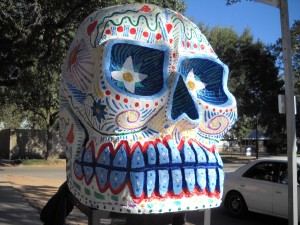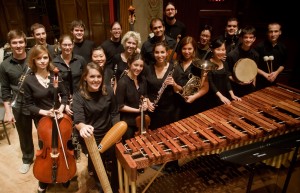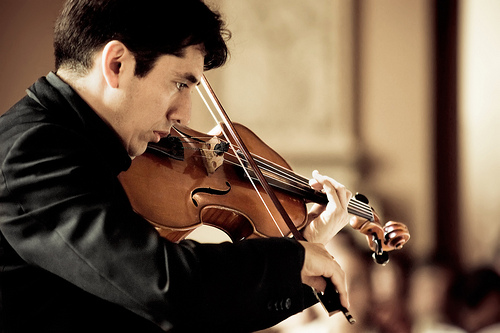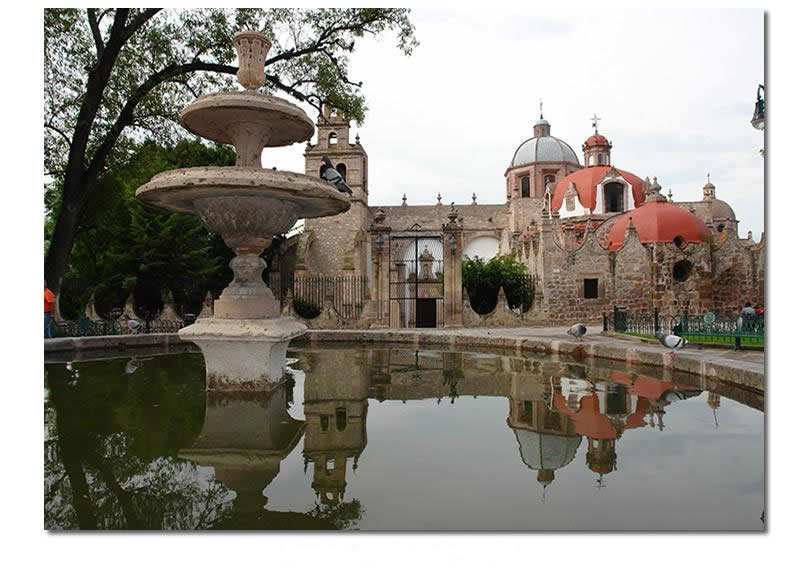 On February 16, 2016, Tuesdays@Monk Space hosted a concert of Cold Blue Music artists in the lively Koreatown district of Los Angeles. A good crowd came out to hear music by Michael Jon Fink, Jim Fox, Michael Byron and Peter Garland. Three premieres were heard including the world premiere performance of In the Village of Hope by Michael Byron.
On February 16, 2016, Tuesdays@Monk Space hosted a concert of Cold Blue Music artists in the lively Koreatown district of Los Angeles. A good crowd came out to hear music by Michael Jon Fink, Jim Fox, Michael Byron and Peter Garland. Three premieres were heard including the world premiere performance of In the Village of Hope by Michael Byron.
The first piece, Vocalise (1979), by Michael Jon Fink, was for piano and performed by the composer. This opened with series of quietly beautiful notes, like the melody from a simple hymn and unfolded with the spare elegance that is the hallmark of Michael Jon Fink’s compositions. The warm acoustics of the cozy Monk Space – with brick walls on three sides – allowed for an extra long duration and decay of the sustained notes, adding to the sense of serenity. Vocalise is not a long piece, but contains all the essential elements of peaceful sensibility that informs this composer’s music.
From a Folio (2013), also by Michael Jon Fink followed, and for this piece of seven movements cellist Derek Stein joined the composer, again on piano. Each of the movements are compact and variously declarative, quietly powerful, unsettling, questioning, solemn or even sorrowful. Sustained cello passages were often set up by a series of simple piano notes or chords, a contrast that proved to be very effective. At other times a soft call and answer pattern between the cello and piano prevailed. The subtle touch on the piano was complimented by the sensitive playing of Derek Stein who discerned the quiet intentions of this work perfectly. The graceful consistency of these seven movements give From a Folio a notable sense of tranquility combined with a satisfying cohesiveness.
The world premiere of In the Village of Hope (2013), by Michael Byron was next, performed by harpist Tasha Smith Godínez, who commissioned the work. This is an ambitious piece, full of constant motion but with an engaging and exotic character. It has a soft, Asian feel and the steady patter of notes fall like raindrops in a warm tropical shower. A light melody in the upper registers is joined in masterful counterpoint below, and the piece glides delicately through several key changes as it continuously unfolds. Listening to the Cold Blue recording of this piece one imagines that the harpist would be a great flurry of motion – but the technique of Tasha Smith Godínez in this performance was superb; her graceful fingers never seemed hurried or her movements labored. The tones from her harp were clear and strong; the lively acoustics of Monk Space made them almost seem amplified. A drier acoustic environment might have served to bring out the intricate texture more clearly. Michael Byron, who was in attendance, admitted to a certain trepidation when he turned in the imposing score, but Ms.Godínez never asked for any changes or modifications and proved more than equal to the task in this performance. In the Village of Hope is a profoundly impressive work, in both its vision and realization.






